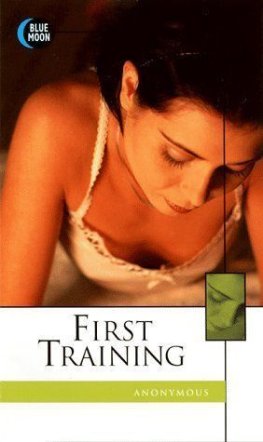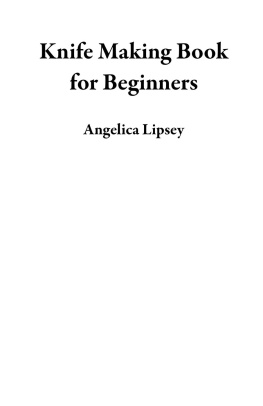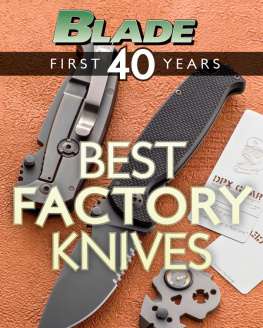How to Open Locks Without Keys or Picks
Many leading Locksmiths feel that opening locked doors by other means than picking or key fitting is a necessary part of a locksmith's knowledge. This point of view is correct, since the quickest method of entering is the best method from the standpoint of service and profit. A professional locksmith analyzes his job thoroughly before undertaking it. Thus he is able to determine before he starts what method to use. Since no two jobs present the same problem to a master locksmith, it is a credit to his ability for him to be familiar with all the ways of doing his work.
The '"Jimmy" and How to Use It
Best known among opening tools is the pry-bar, commonly called a "Jimmy." This tool may be a crowbar or a flat piece of steel varying in length from ten to twenty inches. A packing case hammer with a narrow steel handle and forked end is a small but extremely effective prybar. Plain flat chisels as well as heavy screw drivers have been used as pry-bars. In short, any tool that will pry, bend, or split a locked door or drawer is known as a "Jimmy." (Fig. 1)

Fig. 1 Types of Jimmies
At best the jimmy is a rough tool. Telltale marks almost always accompany every job. In cases where appearance is of little importance, the jimmy can be used quickly and effectively. If, however, no evidence of entry should be left, preparations must be made to prevent the damage or markings. Skilled workers are able to jimmy doors so that the bruises on the wood or metal are almost invisible.
The primary purpose of the jimmy is to pry the door and the jamb apart. To help this procedure, the stop or the strip of molding (A in Figure 2) along the outside of the jamb should be removed. This strip is usually tacked on with thin nails or secured by screws. By prying it loose or removing the screws in the vicinity of the lock, the crack of the door will be revealed.
A strip of wood (C in figure 2) should be placed along the jamb to absorb the pressure of the jimmy. By inserting the sharp end of the pry-bar into the crack near the lock the crack will be widened if pressure is used. A thin strip of metal (B in figure 2) should be placed on the edge of the door to save it from being splintered by the jimmy. A wedge of wood or metal (D in figure 2) should then be inserted in the crack to hold the door and jamb apart.
This process of prying and wedging the door should be continued only 'until the point where the type of locking bolt is visible. The next step depends on the bolt construction. There are several types of locking bolts, each of which is treated in a different manner with different tools.

Fig. 2 Jimmyiing a Door by Spreading and Wedging
The Shove Knife and Now to Use It
The ordinary springlatch has a bevelled bolt which is very easily pressed back into the lock by slipping an ordinary kitchen knife through the crack of the door. (Fig. 3) Notice A in the illustration. It is the molding strip that has been loosened from the door frame as described above.

Fig. 3 Using a Kitchen Knife on a 4pringlatch.
Most locksmiths avoid the unprofessional appearance of a kitchen knife by fashioning a shove knife that is notched as shown in Figure 4. Since some doors open toward the outside, while others open in the opposite direction it is necessary to have a set of 2 shove knives, with notches to correspond to the position of the bolt bevel. In the figure marked "pull" the shove knife is operated by inserting it over or under the bolt and drawing it back in a cutting motion along the bolt until it grips the bevel and forces it back.

Fig. 4 Using Shove Knives to Trip Latchbolts
USING CELLULOID AS A SHOVE KNIFE
A strip of celluloid or similar plastic may be used in the same fashion as the shove knife. It doesn't mar the wood or leave trace of entry. Moreover, in some cases where there is weather stripping or a solid jamb, it can be bent or twisted so that it can be inserted.
Deadlocked Latches
If a latch is deadlocked by means of the small button on the case, the bolt cannot be tripped with a shove knife. Here is a case where the jimmy is used to force back the bolt with heavy pressure. It should be noted, that since most common latches can be deadlocked only from the inside, the locksmith should immediately consider the fact that someone may be inside. Jimmying, of- course, is unnecessary if the person within can be aroused. It is well to be familiar with state laws before attempting jobs of this nature!
Automatic Deadlocks
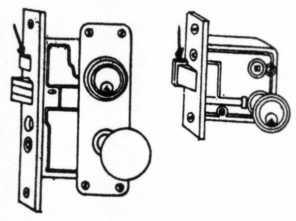

Some types of latches and mortise locks have mechanical arrangements that automatically deadlock the bolts when they engage the strikes. (Fig. 5) As in the case of the deadlocked springlatch, these types cannot be opened with shove knives. The jimmy is then used to force the bolts.
Square or Dead Bolts
When a square bolt (Fig. 5) is encountered; a jimmy must be used. After the door and jamb have been spread and wedged, the point of the jimmy must be forced in front of the bolt. The object is to pry back
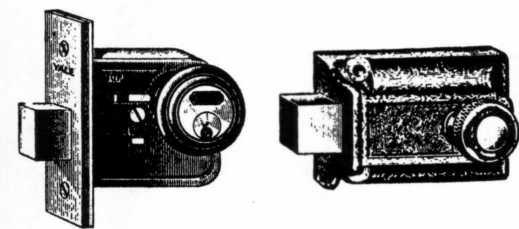
Fig. 6 Types of Square Deadbolts
the locked bolt and it may be expected that a part of the internal construction of the lock will break. Enough leverage should be used to accomplish the desired result. Keep prying until the bolt retracts. Short, jerking movements are better than one steady pull.
Lock sets that have both the latch bolt and the square bolt require two jimmying operations. However, the one spreading and wedging operation should be sufficient to reveal both bolts. In opening such locks, the square bolt should he jimmied first. If the latch were pushed back first it would only spring into the strike again.
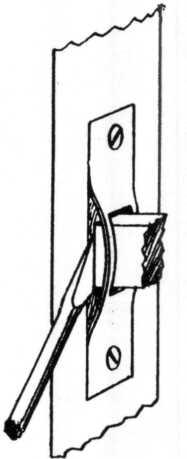
Fig.. Forcing the Deadholt after Rending the Strike
In some cases the door cannot be spread far enough from the jamb so that the jimmy can reach the front of the square bolt. By pushing the strike forward, the front of the bolt may be reached. Most strikes, being manufactured out of thin plate, are easily bent as shown in Fig. 7.
If the front of the bolt cannot be reached, merely drive the point of the jimmy into the bolt so that it can get traction. (Fig. 8) Care should

Fig. 8 Driving Jimmy Into Bolt fox Traction







